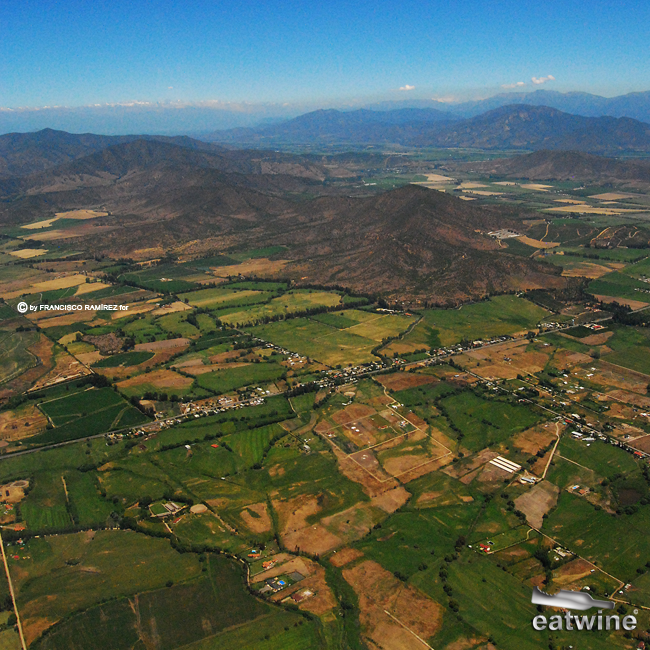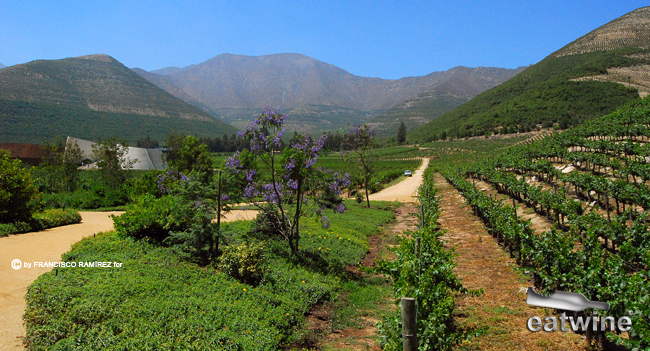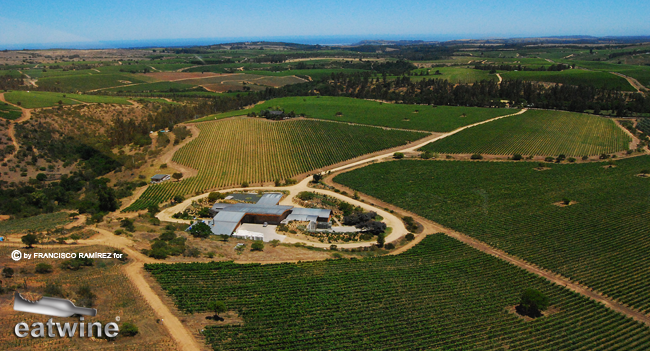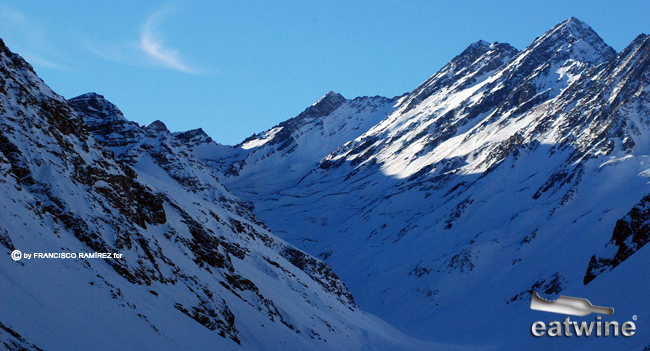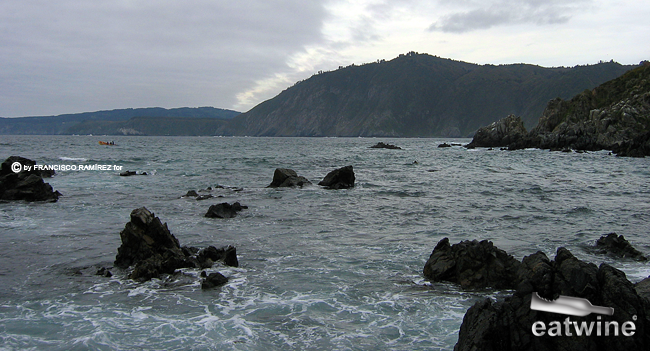Imagine this. Twelve dramatically different wine valleys packed into a 1,000 mile north to south mid-section of the country, no more than 100 miles or so wide at any point. Vineyards sit in the piedmont with jagged, snowcapped peaks cutting into the sky. Others rise on gentle, sloping hills with the shimmer of the azure Pacific to the west. Yet others are nestled along meandering riverbeds, climb steep hillsides, or rest peacefully on flats encased by the hilly topography.
These twelve wine valleys span more than a dozen latitudes ranging from parched desert to the foggy coast, sun-drenched Mediterranean area around Santiago, the capital, and the cold rainy south. Over 80% of Chile is mountainous and as seismically active country during millions of years has created layer upon layer of different soil types. The variety of microclimates and soils is seemingly infinite. To wrap your head around this, it’s like taking all of the wine growing regions in the western US, from British Columbia to Southern California, and squishing them into this reduced area—and then throwing in some of the tallest mountains in the world and a cold, cold ocean.
Here, there are millions, if not infinite, expressions for nearly every major grape varietal. Chile is a wine-growing utopia. Let us count the grapes. Crunchy, crisp, dry Chardonnay from the Limarí; Zippy, dazzle-your-tongue Sauvignon Blanc from the coast with saline and mineral notes; earthy, elegant Pinot Noir; wild, electric, nervous coastal Syrah and it’s riper, jammier cousin inland; bodybuilder Cabernet Sauvignon from the Maipo; old vine, dry-farmed Carignan from the Maule; sparkling wines made from the traditional país grape; Bordeaux blends that redefine elegance. And on and on…
Chile’s wine diversity is truly mind-blowing, overwhelming, inspiring, and exciting.
A previous promotion by Wines of Chile was trying to establish a foothold for Carmenere, a lost Bordeaux blending varietal, that was “rediscovered” in Chile in the 1990s as the country’s signature grape. Obviously they wanted to seize some of the momentum Argentina’s “Malbec Craze” that had caught on in the US like a fever. Problem was, nobody could remember the word Carmenere and much less pronounce it. As a wine, IMHO, there are a few standout Carmeneres (Montes’ Purple Angel, Concha y Toro’s Carmin, JF Lurton’s Alka), but in general, Carmenere gets along MUCH better in Cabernet-based or red blends. Certainly, it is not representative of all Chilean wines. In fact, touting Carmenere as Chile’s “flagship” wine I thought was somewhat of a disservice to the winemaking community here since it disregarded all this wonderful diversity and honed in on one old grape with a good story. Makes for good marketing, I suppose.
There’s definitely more to Chilean wine than Carmenere. Chile’s competitive edge is it’s sheer diversity. That’s it. That should be the wine buzz word. D-I-V-E-R-S-I-T-Y.
Winemakers here have made huge advances in understanding what they naturally have here and how to work with this great potential. It means that Chile is no longer just a red wine producing country nor do only big wineries dominate the landscape. The door is opening to the amazing Sauvignon Blanc and other varietals that exude many corners of this land and small producers expressing this terroir too. Let’s have a look at some of the major topographical drivers that contribute to this diversity of Chile’s terroir.
The Andes: I often joke that the Andes are really the “Great Wall of Chile”, a natural one at least. For centuries, these steep, granitic mountains have warded off enemies, agricultural pests, and been a buffer zone between Chile and Argentina. Why do the Andes matter so much in Chile’s wine? The Andes are a fundamental source of water for the rivers that flow into the wine valleys (many wine valleys actually take their name after the river), sourced from snowmelt during the winter months. As the water melts, it pulls in sediments and minerals moving down a steep gradient. It moves and deposits these minerals into vineyards as it is dripped as irrigation to feed the plant.
Have you ever drank the water in Chile (it’s potable)? It’s hard water that is completely mineral-laden. That same minerality is what gives amazing complexity to the wines. Winemakers also cite that the purity of the water also allows the plant to thrive and best express the terroir with no filters. In the inland valleys closer to the mountains, these areas are now called “Alto”, high zones as they are in the piedmont. Here the Andes also have a cooling effect with the temperature dropping off at night. For example, in the Maipo near Puente Alto where some of the benchmark Cabernet like Don Melchor is born, the glacier visible in Cajón del Maipo, sends cool breezes causing a huge temperature oscillation between night and day.
The Sea: The great Pacific Ocean on the west coast of Chile serves as one big temperature-regulating body year round. The frigid water is fed by the Humboldt Current, coming straight from Antarctica. Besides providing us with an abundance of fresh seafood, this cold sea also creates refreshing breezes every afternoon that blow through the river valleys hills to ventilate and cool the vineyards. In fact, many of the coastal valleys like San Antonio, Casablanca, or the Limarí, often awake to foggy, cold mornings where the sun doesn’t rear it’s head until 3pm through the thick cloud cover. This cloud shroud is key to protect sensitive grape types like pinot noir, sauvignon blanc or chardonnay that love this seaside climate.
Soil types: It is critical to plant the vines in the right place. It’s not just a matter of climate, it’s also a matter of the soil, the “home” where they live. Not all vines are equal, just like people. Some vines thrive in sandy soils, like Malbec, and others need rocky soils with good drainage like Cabernet Sauvignon. Carmenere, a feisty grape, is a water hog and is happy as can be in clay soils that retain more humidity. Likewise, in some areas of the coast, marine sediments and granite hills can determine the taste and concentration of pinot noir or sauvignon blanc. I am by no means a soil expert, but most Chilean wineries and winemakers these days are consulting with the “Terroir Godfather”, Pedro Parra, to really understand the potential of their vineyards. With Pedro, they dig deep calicatas, to see the root systems, stratification of layers of loam, sand, top soil, rock, etc. and understand how the vines work within this is subterranean world.
Diversity is truly where it’s at in Chile. So when you hit your local wine merchant next time, remember Chile’s divine diversity and experiment. For those of you who’d like to come see first hand what all the buzz is about, you can join us on our harvest tour this April to get a taste of all these wines (and unofficial course in Chilean and Southern Cone Wines).

